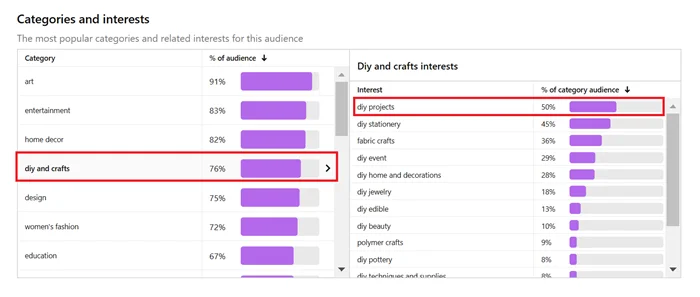With over 500 million monthly active users seeking inspiration and ideas, Pinterest is an incredible platform for driving traffic and monetizing it.
A few years ago, Pinterest was primarily popular for niches like DIY, recipes, and home decor, with users turning to the platform for travel and event inspiration.
However, as its user base expanded, new niches began capturing attention. Today, people use Pinterest not only for travel destinations but also for topics like finance tips and more.
This growth opens up a vast range of opportunities for niche selection. It’s highly likely you’ll find a niche you’re passionate about, allowing you to build your Pinterest blog and earn your First $500 using our proven strategies.
But how do you decide which niche to choose? What factors should you consider before committing to one? That’s exactly what we’ll explore in this article.
Pinterest Niche Ideas: What to Focus On and What to Skip
I could simply give you a list of the top 10 popular niches on Pinterest by traffic and leave it at that. But that’s not the goal here.
It’s important to understand what to focus on and what to avoid when selecting the right niche for yourself.
As you continue reading this article, you’ll gain the clarity needed to choose a niche that aligns with your skills and knowledge, setting you up for long-term success.
1. Exploring Pinterest Niches:
You can easily discover popular niches on Pinterest by using your Pinterest Business Account. Here’s how:
- Open your account and click on the hamburger menu (three horizontal lines) on the left panel.
- Select the ‘Audience Insights’ option.
- Navigate to the ‘All Pinterest users’ tab to view global audience data. If you don’t switch tabs, it will only display data for your account’s audience.
As you’ll notice, ‘Art’, ‘Entertainment’, ‘Home Decor’, ‘Fashion’, ‘DIY Crafts’, are the popular niches on Pinterest.
But how do you identify the best niche for you?
What’s the process? Head to the next section for a detailed explanation
Don’t Miss: 15 Beginner Pinterest Mistakes you can’t Afford to Make
2. Finding a Niche You’re Passionate About:
The most important aspect of niche selection is determining whether you can genuinely provide value to your audience.
At its core, blogging is about delivering value through written content. If you don’t find a topic interesting to write about, it’s best not to choose it as your niche.
Throughout our blogging journey, we’ve covered various niches. If we lacked expertise in a particular niche, we ensured we conducted thorough research beforehand.
It’s okay to start without expertise, but you must have a genuine interest in learning about the niche or sub-niche you choose.
For example, while fashion is one of the highest traffic-generating niches on Pinterest, we never started a blog about it. Why? Because I know that even if I started writing, I wouldn’t be able to stay consistent, and consistency is essential for growth on any platform.
The key is to know yourself. Take your time to evaluate whether you can commit to a topic in the long run. If the answer is yes, start your Keyword Research. If not, it’s time to explore other niches.
3. Analyzing Content Feasibility:
Creating content on Pinterest involves writing valuable blog posts and designing relevant Pins to support them.
Before jumping into your favorite niche, it’s essential to check if it’s feasible for you to create content that resonates with the Pinterest audience.
You can easily do this by opening your Pinterest account and searching for related keywords. For instance, try searching for ‘Best ways to bake a cake’. Observe the type of Pins that appear on your feed, then open the linked articles to analyze the kind of content they provide.
If this observation gives you a rush of confidence, it’s a positive sign! But if you feel unsure, that’s okay, take your time. Remember, you don’t need to be an expert at content creation when starting out.
Your first Pin or blog doesn’t have to be perfect. What matters is your willingness to put in the effort. If you’re ready to work hard, continue with that niche. And if you’re new to this journey, our detailed articles on Pinterest will provide all the guidance you need
4. Thriving in Competitive Niches
If a particular niche is popular on Pinterest, it means many creators are already competing for a share of the traffic.
This makes it challenging to carve out your own space. It’s often best to avoid high-competition niches, which are typically the top ones we mentioned earlier.
However, if you’re confident that this is the niche where you can consistently create quality content, don’t hesitate, go for it!
In high-competition niches, the key is to focus on long-tail keywords with lower competition within sub-niches.
For example, DIY Projects is a broad and highly competitive keyword. But a more specific sub-topic like ‘DIY Projects for School Kids Under 10 Years’ can help you target a less competitive audience and still generate traffic.
We have discussed things in details in Pinterest Keyword Research – Mastery

5. Finding Earning Model of the Niche
In our previous blog post, we covered the Three Best Ways to Monetize a Blog: earning through display ads, affiliate products, selling your own digital products, or a combination of all three.
What’s the best earning model? It depends entirely on your niche and your ability to create content, as we discussed earlier.
For instance, if you’re in the fashion niche, which is highly popular, you can earn through both display ads and affiliate marketing.
However, if you talk about Pinterest Growth Tips like we do, the earning potential through display ads may be lower due to lower search volume compared to fashion niche. In this case, affiliate marketing and digital products are your best options.
We sell our Editable Canva Templates (Currently FREE) to our audience, which help them grow their Pinterest account.
Ultimately, your choice of niche should align with the type of content you’re capable of creating.
For example, if you’re new to blogging and unsure how to create digital products, consider starting with a niche that has strong potential for earning through Display Ads.
Once you gain experience, you can explore creating and selling digital products within your niche.
And that’s it.
We have discussed everything you must take care before finalizing your niche. Take your time before you proceed with it.

